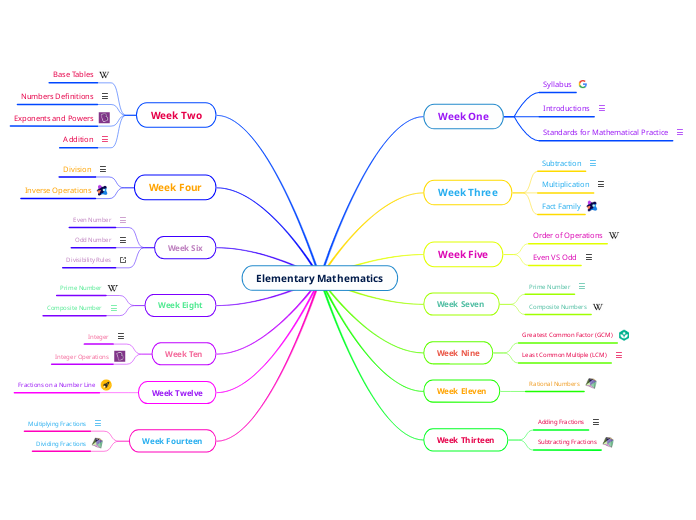Elementary Mathematics
Week One
Syllabus
Introductions
Standards for Mathematical Practice
Week Three
Subtraction
Multiplication
Fact Family
Week Five
Order of Operations
Even VS Odd
Week Seven
Prime Number
Composite Numbers
Week Nine
Greatest Common Factor (GCM)
Least Common Multiple (LCM)
Week Eleven
Rational Numbers
Week Thirteen
Adding Fractions
Subtracting Fractions
Week Two
Base Tables
Numbers Definitions
Exponents and Powers
Addition
Week Four
Division
Inverse Operations
Week Six
Even Number
Odd Number
Divisibility Rules
Week Eight
Prime Number
Composite Number
Week Ten
Integer
Integer Operations
Week Twelve
Fractions on a Number Line
Week Fourteen
Multiplying Fractions
Dividing Fractions
